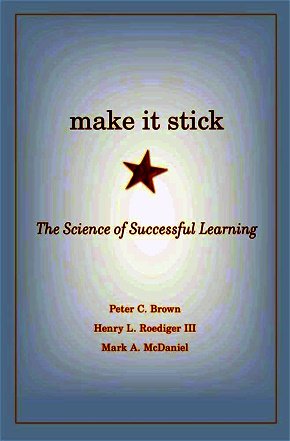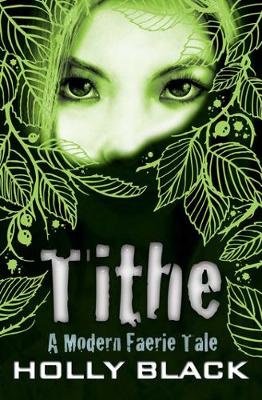Ebersold is a neurosurgeon. The injury had brain protrud-ing, and he recognized it as a gunshot wound. The hunter regained consciousness in the ER, but when asked how he’d hurt himself, he had no idea.
Recounting the incident later, Ebersold said, “Somebody from some distance away must have fi red what appeared to be a 12- gauge shotgun, which arced over God only knows what distance, hit this guy in the back of his head, fractured his skull, and lodged into the brain about an inch. It must have been pretty much spent, or it would have gone deeper.”1
23
Make It Stick ê 24
Ebersold is tall, slender, and counts among his forebears the Dakota chiefs named Wapasha and the French fur traders named Rocque who populated this part of the Mississippi River Valley where the Mayo brothers would later found their famous clinic. Ebersold’s formal training included four years of college, four years of medical school, and seven years of neurosurgery training— building a foundation of knowledge and skills that has been broadened and deepened through continuing medical education classes, consultations with his colleagues, and his practice at the Mayo Clinic and elsewhere.
He carries himself with a midwestern modesty that belies a career that counts a long list of high- profi le patients who have sought out his ser vices. When President Ronald Reagan needed treatment for injuries after a fall from his horse, Ebersold participated in the surgery and postsurgical care. When Sheikh Zayed bin Sultan Al Nahyan, president of the United Arab Emirates, needed delicate spinal repair, he and what seemed like half the nation’s ministry and security forces settled in Rochester while Mike Ebersold made the repair and oversaw Zayed’s recovery. Following a long career at Mayo, Mike had returned to help out at the clinic in Wisconsin, feeling indebted to it for his early medical training. The hunter whose bad luck put him in the way of an errant 12- gauge slug was luckier than he likely knows that Mike was on the job that day.
The bullet had entered an area of the skull beneath which there is a large venous sinus, a soft- tissue channel that drains the brain cavity. As he examined the hunter, Ebersold knew from experience that when he opened up the wound, there was a high probability he would fi nd this vein was torn. As he described it,
You say to yourself, “This patient is going to need surgery.
There’s brain coming out of the wound. We have to clean this
To Learn, Retrieve ê 25
up and repair this as best we can, but in so doing we may get into this big vein and that could be very, very serious.” So you go through the checklist. You say, “I might need a blood trans-fusion for this patient,” so you set up some blood. You review the steps, A, B, C, and D. You set up the operating room, telling them ahead of time what you might be encountering. All of this is sort of protocol, pretty much like a cop getting ready to pull over a car, you know what the book says, you’ve gone through all these steps.
Then you get to the operating room, and now you’re still in this mode where you have time to think through it. You say,
“Gee, I don’t want to just go and pull that bullet out if there might be major bleeding. What I’ll try to do is I’ll work around the edges and get things freed up so I’m ready for what could go wrong, and then I’ll pull it out.”
It turned out that the bullet and bone were lodged in the vein, serving as plugs, another lucky turn for the hunter. If the wound hadn’t corked itself in the fi eld, he would not have lived for more than two or three minutes. When Ebersold removed the bullet, the fractured bone chips fell away, and the vein let loose in a torrent. “Within fi ve minutes, you’ve lost two or so units of blood and now you sort of transfer out of the mode where you’re thinking through this, going through the options. Now it becomes refl ex, mechanical. You know it’s going to bleed very, very much, so you have a very short time.
You’re just thinking, ‘I have to get a suture around this structure, and I know from previous experience I have to do it in this par tic u lar way.’ ”
The vein in question, which is about the size of an adult’s small fi nger, was torn in several places over a distance of about an inch and a half. It needed to be tied off above and below the rupture, but it’s a fl at structure that he knows well: you
Make It Stick ê 26
can’t just put a stitch around it, because when you tighten it, the tissue tears, and the ligature leaks. Working urgently and mechanically, he fell back on a technique he’d developed out of necessity in past surgeries involving this vein. He cut two little pieces of muscle, from where the patient’s skin had been opened up in surgery, and imported them to the site and stitched the ends of the torn vein to them. These plugs of muscle served to close the vein without defl ecting its natural shape or tearing its tissue. It’s a solution Mike has taught himself— one he says you won’t fi nd written anywhere, but handy in the moment, to say the least. In the sixty or so seconds it took to do, the patient lost another two hundred cubic centimeters of blood, but once the plugs were in place, the bleeding stopped. “Some people can’t tolerate this sinus vein being closed off. They get increased brain pressure because the blood doesn’t drain properly. But this patient was one of the fortunate who can.” The hunter left the hospital a week later. He was minus some peripheral vision but otherwise remarkably unscathed from a very close brush with mortality.
Refl ection Is a Form of Practice
What inferences can we draw from this story about how we learn and remember? In neurosurgery (and, arguably, in all aspects of life from the moment you leave the womb), there’s an essential kind of learning that comes from refl ection on personal experience. Ebersold described it this way: A lot of times something would come up in surgery that I had diffi culty with, and then I’d go home that night thinking about what happened and what could I do, for example, to improve the way a suturing went. How can I take a bigger bite with my needle, or a smaller bite, or should the stitches be closer together? What if I modifi ed it this way or that way? Then the
To Learn, Retrieve ê 27
next day back, I’d try that and see if it worked better. Or even if it wasn’t the next day, at least I’ve thought through this, and in so doing I’ve not only revisited things that I learned from lectures or from watching others performing surgery but also I’ve complemented that by adding something of my own to it that I missed during the teaching pro cess.
Refl ection can involve several cognitive activities that lead to stronger learning: retrieving knowledge and earlier training from memory, connecting these to new experiences, and visualizing and mentally rehearsing what you might do differently next time.
It was this kind of refl ection that originally had led Ebersold to try a new technique for repairing the sinus vein at the back of the head, a technique he practiced in his mind and in the operating room until it became the kind of refl exive maneuver you can depend on when your patient is spouting blood at two hundred cubic centimeters a minute.
To make sure the new learning is available when it’s needed, Ebersold points out, “you memorize the list of things that you need to worry about in a given situation: steps A, B, C, and D,”
and you drill on them. Then there comes a time when you get into a tight situation and it’s no longer a matter of thinking through the steps, it’s a matter of refl exively taking the correct action. “Unless you keep recalling this maneuver, it will not become a refl ex. Like a race car driver in a tight situation or a quarterback dodging a tackle, you’ve got to act out of re-fl ex before you’ve even had time to think. Recalling it over and over, practicing it over and over. That’s just so important.”
Make It Stick ê 28
The Testing Effect
A child stringing cranberries on a thread goes to hang them on the tree, only to fi nd they’ve slipped off the other end. Without the knot, there’s no making a string. Without the knot there’s no necklace, there’s no beaded purse, no magnifi cent tapestry.
Retrieval ties the knot for memory. Repeated retrieval snugs it up and adds a loop to make it fast.
Since as far back as 1885, psychologists have been plotting
“forgetting curves” that illustrate just how fast our cranberries slip off the string. In very short order we lose something like 70 percent of what we’ve just heard or read. After that, forgetting begins to slow, and the last 30 percent or so falls away more slowly, but the lesson is clear: a central challenge to improving the way we learn is fi nding a way to interrupt the pro-cess of forgetting.2
The power of retrieval as a learning tool is known among psychologists as the testing effect. In its most common form, testing is used to mea sure learning and assign grades in school, but we’ve long known that the act of retrieving knowledge from memory has the effect of making that knowledge easier to call up again in the future. In his essay on memory, Aristotle wrote: “exercise in repeatedly recalling a thing strengthens the memory.” Francis Bacon wrote about this phenomenon, as did the psychologist William James. Today, we know from empirical research that practicing retrieval makes learning stick far better than reexposure to the original material does. This is the testing effect, also known as the retrieval- practice effect.3
To be most effective, retrieval must be repeated again and again, in spaced out sessions so that the recall, rather than becoming a mindless recitation, requires some cognitive effort. Repeated recall appears to help memory consolidate into a cohesive repre sen ta tion in the brain and to strengthen and
To Learn, Retrieve ê 29
multiply the neural routes by which the knowledge can later be retrieved. In recent de cades, studies have confi rmed what Mike Ebersold and every seasoned quarterback, jet pi lot, and teenaged texter knows from experience—
that repeated re-
trieval can so embed knowledge and skills that they become refl exive: the brain acts before the mind has time to think.
Yet despite what research and personal experience tell us about the power of testing as a learning tool, teachers and students in traditional educational settings rarely use it as such, and the technique remains little understood or utilized by teachers or students as a learning tool in traditional educational settings. Far from it.
In 2010 the New York Times reported on a scientifi c study that showed that students who read a passage of text and then took a test asking them to recall what they had read retained an astonishing 50 percent more of the information a week later than students who had not been tested. This would seem like good news, but here’s how it was greeted in many online comments:





















